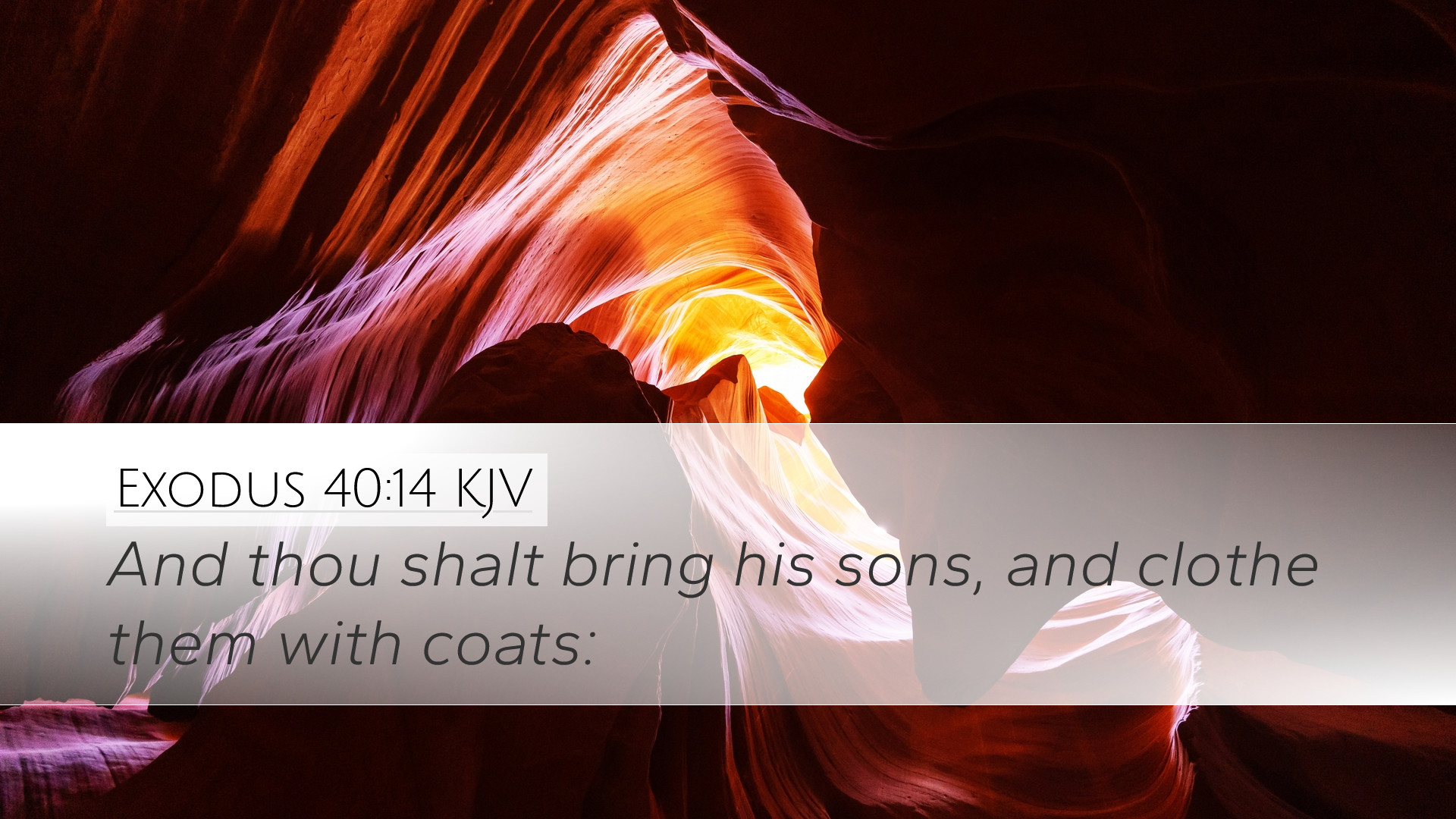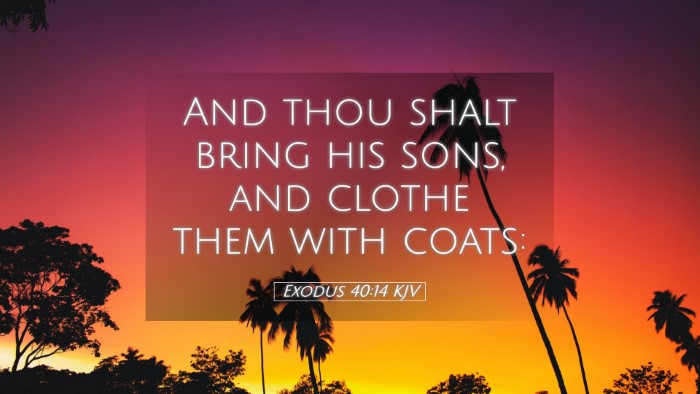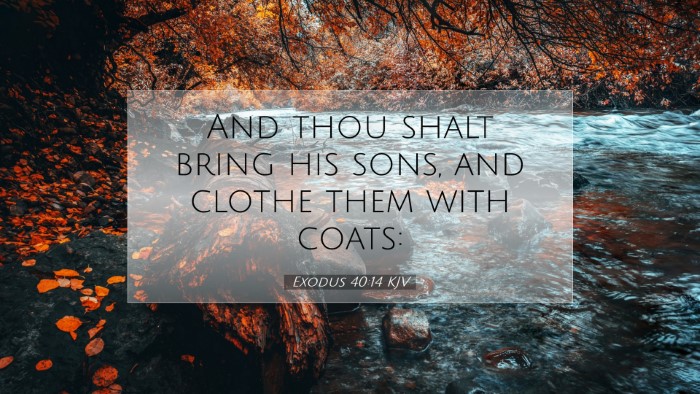Exodus 40:14 - Biblical Commentary
Exodus 40:14 reads: "And thou shalt bring the sons of Aaron, and thou shalt clothe them with coats." This verse marks a significant moment as it highlights the sanctification and preparation of Aaron’s sons for their priestly duties. The details surrounding this verse are rich with theological implications and practical applications for contemporary faith communities.
Contextual Background
The book of Exodus concludes with God's instructions on how to construct the Tabernacle, a place of divine presence among the Israelites. The establishment of the priesthood is crucial, as it serves as a mediator between God and His people. Understanding the ceremonial aspects is vital, as they carry forward into New Testament theology.
Commentary Insights
Matthew Henry's Commentary
Matthew Henry emphasizes the significance of priestly garments as symbols of holiness and dedication. He notes that the clothing of the sons of Aaron is not just a practical step; it symbolizes their role and responsibilities as priests. The adornment signifies their consecration and readiness to serve in the Tabernacle. Henry states:
"The garments of the priests were a great part of the glory of their office. It is important that they were clothed appropriately, signifying their separation from the common people to perform holy duties."
He further explains that such an act serves to remind them of their high calling and duties. The garments serve as a physical representation of their spiritual condition.
Albert Barnes' Notes
Albert Barnes elaborates on the specific importance of the priestly office and the symbolic acts that accompany it. In his view, the act of clothing Aaron's sons represents more than physical attire; it embodies their preparation for a life dedicated to serving God. Barnes comments on two key aspects:
- Divine Election: God chooses who serves in His presence, and this act of clothing signifies the importance of their role.
- Holiness Required: The garments serve as a reminder that those who approach God must be holy, echoing throughout biblical teaching.
He also connects the act of clothing with the greater narrative of redemption, relating it to the New Testament’s call for believers to 'put on Christ' (Romans 13:14).
Adam Clarke's Commentary
Adam Clarke provides a detailed exegesis of the verse, discussing the broader implications of the priestly garments in relation to the New Covenant. He notes that Aaron's sons were to be clothed in tunics and caps, symbolizing purity and readiness for divine service.
Clarke reflects on the spiritual significance of clothing and how it represents an inner transformation. He states:
"The external clothing of the priests reflects the need for inner righteousness and consecration. Just as they are adorned with garments, today believers are called to wear the armor of God."
This conveys the continuing thread of holiness from the Old to the New Testament, where external representations mirror internal states and obligations to God.
Theological Implications
In summary, Exodus 40:14 offers rich theological insights and raises relevant questions for modern readers:
- Role of Mediation: It emphasizes the priestly role as vital within the covenant community. Pastors and theologians can draw parallels to the role of Christ as the ultimate High Priest.
- Divine Sovereignty: God’s directive in setting apart Aaron and his sons illustrates His control over who is positioned for sacred duties, encouraging humility among church leaders.
- Holiness in Worship: The necessity of holiness in worship is underscored through the act of clothing, which is as relevant today as it was during Exodus.
- Preparation for Service: This reflects the continuous requirement for believers to prepare themselves adequately for service to God.
Practical Applications
For pastors, students, and scholars, this verse not only serves as a historical reminder but also as a call to embody the principles of holiness and service in their own lives:
- Embrace Your Calling: Just as Aaron's sons received specific instructions, modern believers are encouraged to understand and accept their callings seriouly.
- Preparation for Worship: Prior preparation for church services should be both practical and spiritual, recognizing the importance of approaching God with reverence.
- Community and Representation: Just as priests represented the people before God, church leaders should strive to accurately reflect Christ in their communities.
Conclusion
Exodus 40:14 serves as a pivotal text regarding the establishment of priesthood and the expectations surrounding it. The implications of this verse have continued relevance, inviting believers to explore their relationship with God through worship, service, and the pursuit of holiness. The reflections drawn from sacred history illuminate the path for today’s believers as they seek to live in accordance with God’s divine will.


